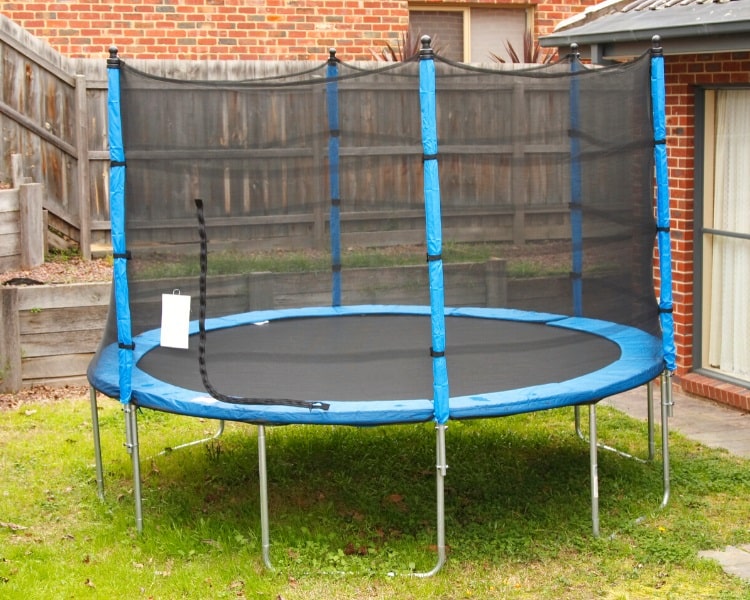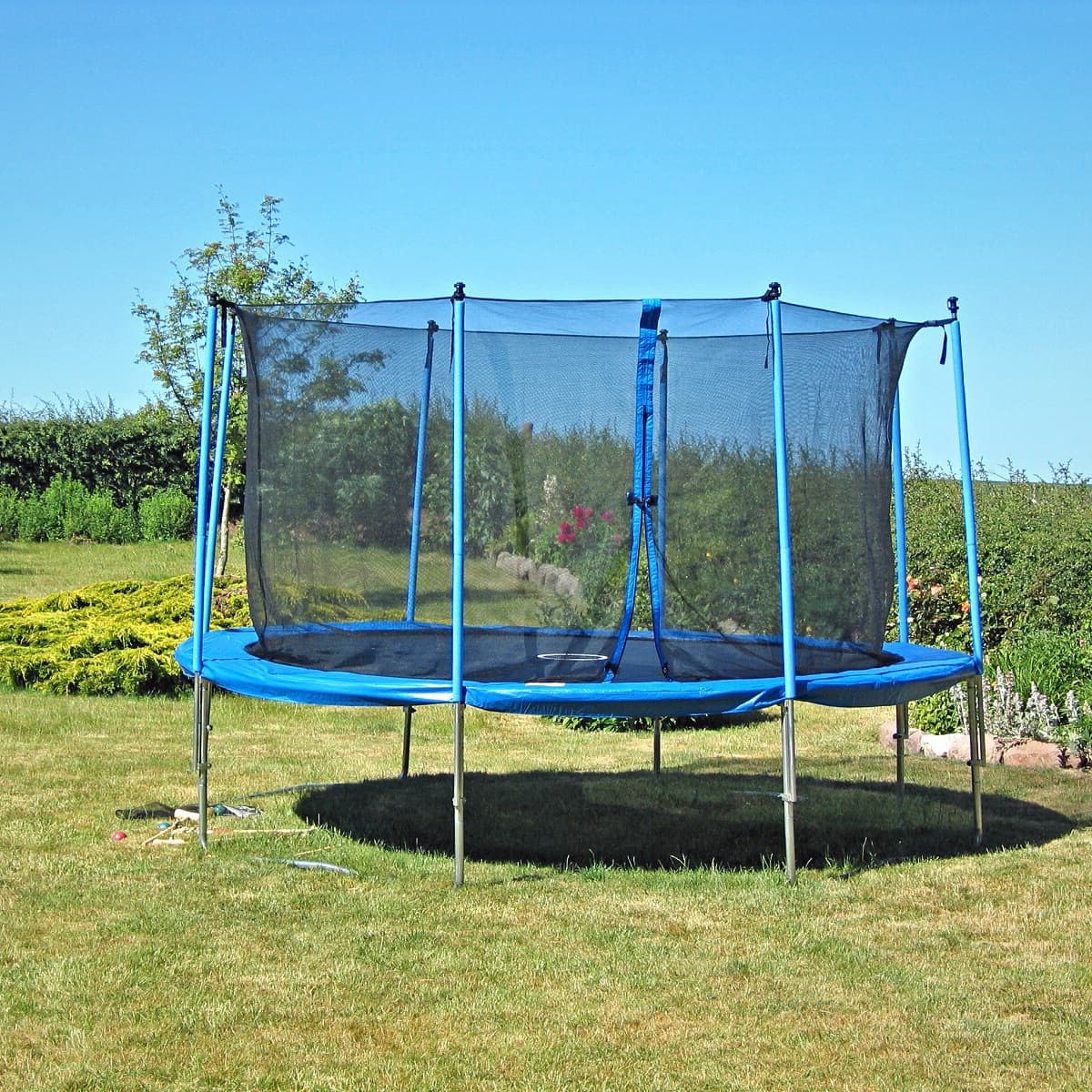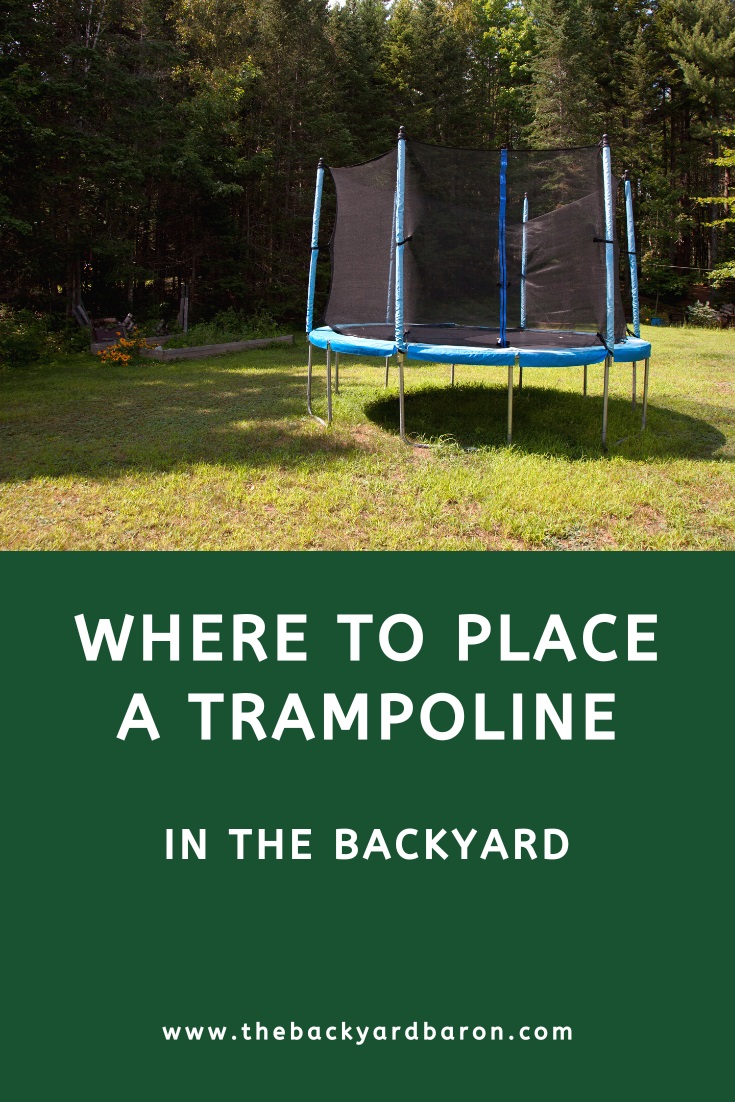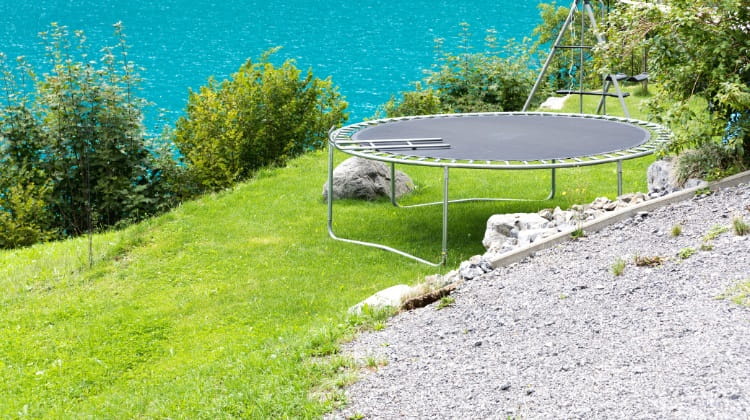Last updated: June 20, 2023
Tips for the best spot and best surface to place your trampoline in the backyard, plus things to avoid for maximum safety and enjoyment.
Before you purchase a backyard trampoline, it’s essential to consider the terrain, placement, and security of your trampoline to ensure safety and enjoyment.
Picking the most suitable surface for your trampoline will help make it a lasting, enjoyable, and safe experience for everyone.
In this article, I am going to discuss the best places to install your trampoline, as well as a few things to avoid.
Where to Place Your Trampoline in the Backyard
It’s essential to check out the surface where you plan to put the trampoline, ensuring it is stable and safe.
Making sure there is proper space around the trampoline, considering what ground to place it on, and leveling out the jumping surface are all factors that go into determining the ideal place for your trampoline in your backyard.
Things to consider are the trampoline model and size, the size of your backyard, and the terrain you are dealing with. Every situation will be different, and there are many options to explore.
Tips for the best trampoline surface:
- Ground should be flat
- Avoid slopes
- Grass is the best surface
- Consider using rubber tiles
- Avoid a concrete surface
- Leave space around and above the trampoline
In the meantime, here are some more resources around trampoline safety and maintenance you may find interesting:
- Trampoline weight limit explained
- Important trampoline safety rules for kids
- How to keep a trampoline from blowing away
1. Ground Should Be Flat
Let’s start with perhaps the most obvious thing. Trampolines are best installed on a flat surface to create a stable base for jumping without shifting.
An even surface also offers the safest trampoline environment so that when jumping, the weight is evenly distributed to avoid any injuries.
A flat surface is a non-negotiable when selecting a spot for your trampoline because being level is the safest way to use a trampoline, regardless of the size.
It is possible to level out your trampoline on a slope, which we will go over below, but ideally, the ground you place your trampoline on should be flat.
2. Avoid Slopes
We can all imagine why a trampoline placed on a slope would be a bad idea. Slipping, falling, and tumbling over are more likely to happen when on a hill.
There is also a risk that the person jumping will land unevenly and suffer an injury. While the damage might be minor, like a twisted ankle, it can also result in something much worse.

Setting your trampoline up on a slope can cause it to wear out quicker because it works harder to balance the uneven surface.
If the trampoline is set up on uneven terrain for an extended period, some areas end up holding more weight, and can create unbalanced wear on the suspensions and other parts.
In addition to shortening the lifespan of your trampoline, a slope can cause it to tip over more easily, which could cause further damage to the trampoline and its surroundings.
If your backyard has uneven surfaces, there are options to make the jumping surface flat, but it will take more effort and time to prepare. The legs should be trenched into the ground to make it safe and completely level.
Another option is to use trampoline leveling kits or blocks to help you achieve a fully balanced trampoline.
3. Grass Is the Best Surface
Regarding the ideal terrain to place your trampoline, grass is best because it’s softer and will naturally help absorb shock.
One downside is that putting a trampoline on your grass can damage the area underneath and around the trampoline.
One of the best ways to avoid permanent damage is to regularly move the trampoline to allow the grass to recover with sunlight and air circulation. Considering the size and weight of the trampoline you have, this could actually be quite a significant task.
There are some ways to prepare your grass by applying grass feed and planting new seeds regularly. Another option could be using artificial grass to avoid maintenance while still giving your trampoline the necessary cushion for jumping.
4. Consider Using Rubber Tiles
If grass isn’t an option for you, or if it’s simply not the route you want to take, rubber tiles are a reasonable alternative because they also offer a softer surface to help with shock absorption.
The rubber base will help prevent the trampoline from shifting, especially compared to placing it directly on a concrete surface.
5. Avoid a Concrete Surface
Since concrete can be an even surface, it may seem like an ideal place to put your trampoline. Unfortunately, it is not.
Concrete doesn’t create the necessary traction needed when bouncing, so it is hard on the trampoline but potentially also on the jumper’s joints.
It’s also important to note that concrete does not ensure that the trampoline will stay in place. Weather and weight can still move it around.
But if concrete is your only option, make sure that you install a safety net and have padding set up around the area. And ideally, buy a set of rubber tiles, as discussed above.
6. Leave Space Around and Above the Trampoline
Lastly, and this is something that often gets overlooked, make sure that you leave sufficient space around and above the trampoline.

Make sure that there is nothing above your trampoline so no one can hit their heads. You should also avoid placing the trampoline underneath the crown of a tree to prevent leaves from landing on the trampoline mat.
Also leave sufficient space around the trampoline in case someone launches or falls off. A net can help avoid an accident, but you should always make sure you leave enough space around the trampoline.
The recommended minimum amount of empty space around the trampoline is 5 feet or 1.5 meters.

